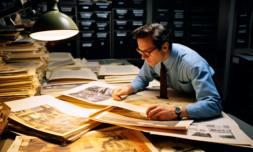Even after spending millennia entombed in stone sarcophagi, some ancient Egyptian mummies still emit a surprisingly pleasant scent, research has discovered.
In a recent study combining science with sensory exploration, researchers have discovered that ancient Egyptian mummies, some preserved for over 5,000 years within their sarcophagi, emit surprisingly pleasant aromas.
The researchers noted these mummies release scents described as ‘woody,’ ‘spicy,’ and ‘sweet.’ The revelation sets a new path on the sophistication of ancient Egyptian mummification practices and their enduring legacy.
The research was conducted on nine mummies at the Egyptian Museum in Cairo by a team from University College London (Central) and the University of Ljubljana. The remains were from the New Kingdom (around 1500 BCE) to the Roman Period (around 500 CE). The subjects’ remains were examined through modern chemical techniques and the ever-dependable human sense of smell.
To maintain the delicate condition of the articles, scientists used non-invasive techniques like pulling air from the cages via small tubes. The air samples were put through gas chromatography and then mass spectrometry to determine the molecules responsible for the scents, while other humans described the smells.
Speaking to the BBC, Cecilia Bembibre, director of research at UCL’s Institute for Sustainable Heritage and a co-author of the study, said, ‘In films and books, terrible things happen to those who smell mummified bodies. We were surprised at the pleasantness of them.’
According to the ancient Egyptians beliefs, mummification was a sacred process that protected the soul and the body for the afterlife, specifically for pharaohs and the nobility. Enjoyable aromas, obtained by the application of oils, waxes, resins and balms, were believed to associate the dead with purity, while unpleasant smells were a sign of corruption.
‘The practice evolved over time,’ noted Ali Abdelhalim, director of the Egyptian Museum in Cairo and a study co-author. ‘Identifying different techniques and materials used offers insights into the era, location, and socioeconomic status of the individual being mummified.’




















